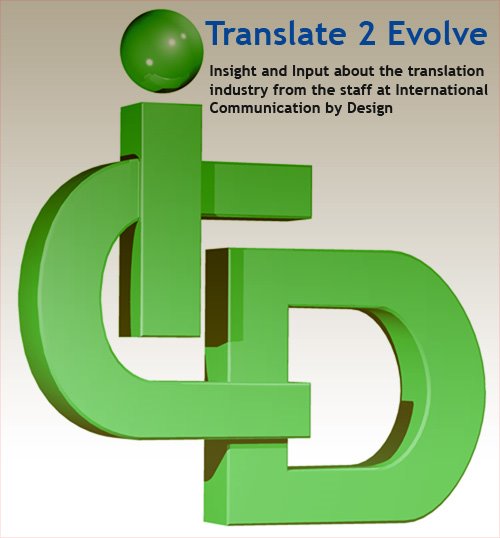Sunday, December 7, 2008
Single-Sourcing, Translation Savings
Many of the current authoring tools offer the flexibility to single-source. Quark 8® offers the option to create XML based content and output files in Flash. Adobe FrameMaker® also allows outputting content for help files when the structured content is stored as raw content in XML format instead of a manual. When you consolidate your material and start single-sourcing, you are able to save time and re-use your content across your output formats. Translation consistency is also enhanced, and you are able to maximize the use of translation memories.
ICD on Facebook
So, if you have a Facebook account, please join our Facebook page and help get the word out about our company and services, and hopefully we can keep the world connected through translation and localization.
Thursday, October 23, 2008
Free Translations, Are you Really Saving Money? Jeff tells it like it is
Hi Readers, I am back after a two week vacation. Jeffrey Jorgensen, International Accounts Manager at ICD has written an article in World Trade Magazine about the hidden costs of having product materials translated by foreign distributors at minimal cost or free of charge.
Here is an excerpt:
As you decide whether or not to use distributors to translate your content, remember they often do not have the expertise and credentials to conduct professional translations. Even if the “translator” is a native speaker of the target language, that person may not be fully versed in such things as the correct grammar of the target language or idiomatic expressions.
The alternative is to use a professional language service provider (LSP) to translate content. With an LSP, you should expect the translator to have experience in the discipline of translation, be highly knowledgeable in the grammar of the target language, and be accredited by the American Translator’s Association (ATA).
You can read the full article if you are interested.
Tuesday, September 30, 2008
Unwanted Files
This is particularly true for websites. Websites are usually composed of various files that are supplied by different groups and compiled by the webmaster. So, when it is sent for translation, the webmaster usually sends the entire package without indicating what needs translation. Usually, html, flash, xml, and graphic files are translated. PDFs that relate to another document are not translated unless specified. CSS and RESX files are excluded because they do not hold any literary content. Well, please try to specify what needs translation when you send a bunch of files. Accurate navigation will help the translation process, and keep my car from crashing through the guard rails.
Thursday, September 25, 2008
Keeping Up
There are several programs that are hosted on the web, and with license keys, both translators and clients have access to the translation memory. One problem that arises with this new technology is the unauthorized editing and updating of the translation memory without a notification system. Now, the client's reviewer changes some part of the translation, updates the memory and forgets to notify the translation vendor. What happens, it becomes inconsistent the next time the translator uses the memory for future projects. A setup that allows access without notifications or a status ticker that indicates the last time the memory was accessed will alleviate the inconsistencies and the future use of unapproved translations.
Sunday, September 14, 2008
Esprit d'ICD and New Tag Line
The new tag line also highlights ICD's evolution as we grow and continue to expand our client base. ICD's philosophy of providing quality translations and superior service is constantly evolving. We are developing and enhancing our techniques, and exploring new software developments in the translation and localization industry. If you would like to subscribe to our newsletter, just email: info@icdtranslation.com
Wednesday, September 3, 2008
Fonts Fun
Asian languages have various fonts that are specific to each language based on the character type. For example: PMing Liu (包含鋰離子電池) for Traditional Chinese, and Sim Sun (包含锂离子电池) for Simplified Chinese. They may look similar to the common eye, but an expert desktop publisher will know that there is a difference, and you don't want your readers reading the wrong thing. Therefore, you can have your content translated correctly, but if you use the wrong fonts then it's a complete waste of time and money. On a side note, as I was writing this post, a client sent me an email asking what fonts I used for Arabic, Chinese, Polish, and Russian. What a coincidence since I was blogging about the importance of knowing and having the correct fonts for translated content.
